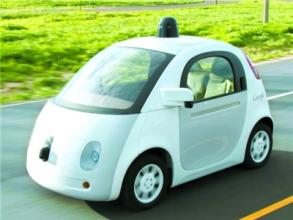400M people will rely on robotic car sharing by 2030
 Ride sharing is now a new thing in our daily life. Examples like Uber, which provides a car sharing service by hiring private drivers driving their own vehicles to pick up customers. But it is controversy for taking a private car because sometimes it can be dangerous and troublesome. With the development of the innovative robotic service, there will be a new car-sharing economy based on the self-driving vehicles.
Ride sharing is now a new thing in our daily life. Examples like Uber, which provides a car sharing service by hiring private drivers driving their own vehicles to pick up customers. But it is controversy for taking a private car because sometimes it can be dangerous and troublesome. With the development of the innovative robotic service, there will be a new car-sharing economy based on the self-driving vehicles.
Report from the ABI Research showed that by 2030, there would be 400 million people relying on the robotic cars sharing. Robotic cars are completely automatic, such as Google’s in-house pod car.
In fact the innovative robotic service marks the beginning of the driverless car era. Different from the traditional car sharing service, there is no any driver on the robotic car, customers will wait for the car drives itself to pick them up and drive them to where they want to go.
“The new car sharing economy happens in three phases: street rental service, ride sharing service, and robotic service,” Deminique Bonte, the vice president at ABI Research wrote in a statement, “The automotive industry is in the process of merging phases one and two, with robotic service to become the ultimate form of transportation for its availability, convenience and affordability.”
The robotic car service will not only transform the auto industry and enhance the overall consolidation of the automotive industry, but will also make some contribution to some sensitive issues. Take Uber as an example, research showed that it would take much longer for colored people to wait for the Uber driver, and colored people are tended to be ignored by drivers.
According to the Washington Post, University of Maryland has published a report, showing that if one lives in the block with a larger proportion of colored people, he will need to spend more time to wait for the driver. Thus the new robotic car sharing will be a good thing to release such sensitive issues.
